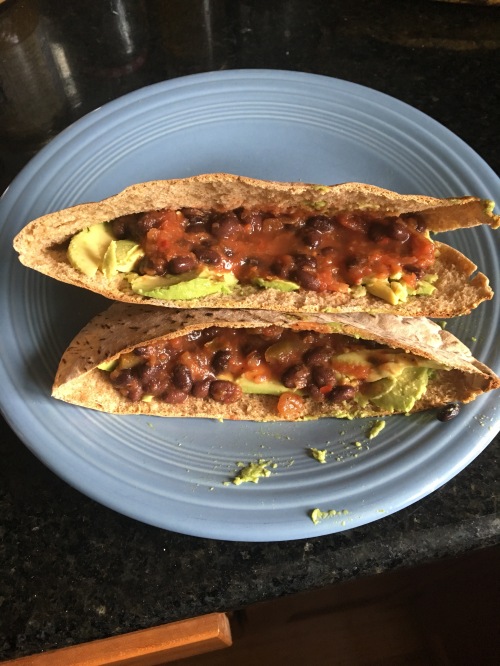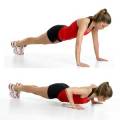The following guest post was written by a fellow blogger, Gary Hamilton. Gary discusses the different running surfaces we face and the pros and cons of each. (Believe me, there is a big difference! As I run with a bit of Achilles tendonitis, I can feel the difference between packed dirt, asphalt, cement and pavers. You can read all about it by clicking here.)
Gary also writes about the different types of running shoes that are out there, and which are the best for each type of running surface, so with out further ado, let’s look at:
Pros and Cons of Running Surfaces and Running Shoes
As more people seek to improve their health and fitness levels, many decide to make their path to wellness one on which they run to achieve their goals. Running may not be suitable for everyone, but for those whose health permits, there are important aspects to keep in mind for a safe and optimal run.
Different Types of Running Surfaces
Just as there are many different types of runners, along with styles of and reasons for running, so there are different types of surfaces to run on: grass, roads, sand, snow, track, trails, and treadmill. Journalist and former triathlete Kelly O’Mara reported advice from various professionals working in the fields of fitness, exercise physiology, and muscle and exercise research, who emphasized that runners should vary their running surfaces, but also be aware of the following conditions when considering those surfaces:
Compliance vs. Stiffness. Surfaces with compliance, such as tracks composed of synthetic materials, “give” a bit with each step and provide less trauma on the joints than stiffer surfaces, such as asphalt or concrete.
Damping properties. Surfaces, such as sand, thick grass, or dirt, have damping properties, which means they dissipate energy, and place more strain on the knee and calf.
Traction. Important for any surface, but runners can quickly lose traction on wet grass, loose gravel, packed snow, and ice.
Unevenness. Trails typically provide uneven surfaces, which can often cause runners to trip and twist or sprain ankles, and sustain other injuries upon falling.
As Marc Bloom and Steve Smythe reported for Runner’s World, each running surface has its benefits or drawbacks, pros and cons, to consider; these are listed alphabetically for convenience, not in order of importance or preference.
Grass: The close-cropped grass of golf courses, football fields, parks, and even sheep pastures offers a natural running surface.
- Pros: Less strain and less impact, but more of a work-out on the muscles.
- Cons: Potential for uneven and/or wet surfaces, tripping, and injuries.
Roads: Most roads are composed of either asphalt or concrete, while some are packed dirt. Each type has its own pros and cons.
Asphalt: Typically a blend of crushed rock, gravel, and tar, asphalt is slightly softer than concrete.
- Pros: Predictable even surface, ease of measuring distances, and facilitation of maintaining an even pace.
- Cons: Causes more strain on the body, potential for tripping or falling due to rises or arches, and potholes, and must avoid traffic and pedestrians.
Concrete: Typically composed of cement and crushed rock, concrete is the hardest surface.
- Pros: Flatness and accessibility.
- Cons: Hard surface is more apt to cause injuries and impact strain, and must avoid vehicles and pedestrians.
Dirt: Packed dirt of roads, tracks, or trails is easily accessible.
- Pros: Accessibility and soft- to medium-packed dirt reduces strain or impact injuries.
- Cons: Can become uneven and muddy, increasing the chances for injuries.
Sand: Most often associated with running on beaches, sand as  a running surface provides quite a workout.
a running surface provides quite a workout.
- Pros: One of the few times it’s OK to run barefoot; provides resistance and strength training in varying degrees, depending on the type of sand the runner chooses to run on: the soft, squishy sand further up on the beach or in the dunes, or the harder, packed sand near the water’s edge.
- Cons: Potential for blisters if running barefoot; soft sand may cause Achilles tendon or ankle injuries, while packed sand at the water’s edge is uneven and causes stress on the body at different points.
Snow: Those who live in cold regions that receive snow over the winter often still enjoy running outside on moderate temperature days when frostbite or other cold weather risks are not as severe.
- Pros: Forces a slower, recovery pace of running.
- Cons: The ever-present danger of ice that may be hiding under the snow, or the packed snow itself can be very slippery.
Track: Some older tracks are composed of cinders, while newer ones have synthetic materials.
Cinder tracks:
- Pros: Even, measured surface.
- Cons: Not weather-proof, as cinders react to the elements in different ways, and loose cinders can cause slipping and falling.
Synthetic tracks:
- Pros: Compliance or “give” on impact, and easily timed, measured surface.
- Con: Long runs become tedious and long curves on tracks provoke more strain on joints.
Trails: Even trails are different; some are packed dirt, while others wind through woodlands.

Packed dirt:
- Pros: Soft to medium-packed dirt reduces strain or impact injuries.
- Cons: Packed dirt can become uneven and muddy, increasing the chances for injuries.
Woodlands:
- Pros: Soft peat is easy on joints, usually level, and scenic.
- Cons: Tree roots can cause tripping and injuries; peat and moss can become slippery.
Treadmill: A treadmill is the best option when weather doesn’t permit outdoor runs, or for those who live in areas without suitable outdoor running surface options.
- Additional pros: Even surface, no obstacles, easy on the legs, and run at desired pace.
- Cons: Tedious, causes profuse sweating, getting off pace may cause slipping or falling off the treadmill, and added expense of gym membership or purchasing one for home use.
Different Types of Running Shoes
It’s not advisable to do a lot of prolonged running on bare feet. To avoid injury, it’s best to wear good, high quality running shoes. There are different types of shoes, suitable for different running surfaces and for different types of runners.
MacKenzie Lobby reported for The Active Times on the 25 best running shoes for 2013 in the categories of “barefoot/minimalist, lightweight, neutral, stability and motion control shoes for road and the trail.” Shoe categories, types of runners and surfaces, and features depending on brand are included as follows:
Barefoot/minimalist: For those who enjoy natural surfaces. Features: injection-blown rubber platform; low-to-ground with zero drop from heel to toe; lightweight and flexible; reflective for nighttime running; enough cushion to prevent abrasions.
Lightweight: For those who enjoy roads and technical trails, and prefer something between barefoot and traditional shoe. Features: zero-drop platform; rocker-shape outsole for easy toe-off; lightweight and durable; cushioning; asymmetrical uppers; breathable; fast-drying.
Neutral: For those who enjoy aggressive trails in any weather. Features: foam midsole; aggressive outer sole; zero-drop with wider toe box; multi-directional treads; expansion pods for contraction and expansion.
Stability: For those who enjoy long-distance trail or road running. Features: 8mm drop; well-cushioned; dual density outer sole; triple density insole for arch support; water-proof upper membrane; gel-cushioning system.
Motion control: For those who enjoy road, track, or trail running, but have foot or leg issues and need more support. Features: dual-density foam; 12mm drop; supportive but flexible; crash pad underfoot.
Running Enthusiasts Unite
Some runners enjoy the solitary run, but others enjoy running with one or more individuals. Some running is intended purely for the health and fitness of the individual runner, while other organized running events–such as marathons–are intended to challenge groups of runners to compete with others for prizes, to raise money for charities or causes, or for the prestige of being able to say, “I completed the ______ Marathon.” One thing is certain, running enthusiasts are passionate about their choice of fitness activity and often run in spite of odds or weather conditions with a commitment that rivals the purported U.S. Postal Service creed!
Gary Hamilton is president and founder of InteliChart, a health IT company that aims to connect healthcare organizations, providers, patients, and their communities through integrated solutions like Intelichart’s healthcare integration engine.










